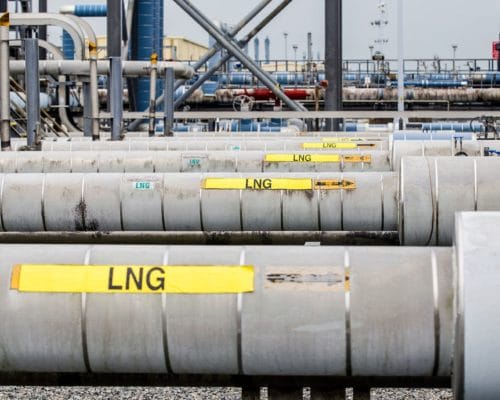Region

The Global Natural Gas Pipeline Expansion Plans and Climate Impacts
The world is at an inflexion point between speeding up the renewable energy transition and locking itself in fossil fuels. The latest reports make a strong case for the latter.

LNG Prices in 2022 Bring Stability after 2021’s Volatility
Many experts predict that LNG prices will remain relatively high throughout 2022. This comes on the heels of record breaking prices across Europe and Asia in 2021. But what is the longer term outlook?

The Russia-Ukraine War and Its Impact on the LNG Market
The effect of the Russia - Ukraine war on the global LNG market is concerning for many and for Asian countries, it serves as a mirror of the risks that reliance on LNG poses.
Canon Backed Think Tank CIGS Spreads Climate Change Denial
Canon cameras, used by climate change, conservation and wildlife communicators is now linked to a climate denial think tank - CIGS.

IPCC Report: Climate Finance for Adaptation Must Increase for Developing Countries
The latest IPCC Working Group II report largely stresses the need to accelerate climate adaptation, eradicate injustice and end the use of fossil fuels. The report, ‘Climate Change 2022: Impacts, Adaptation, and Vulnerability,’ emphasised that coal and other fossil fuels are choking humanity.

The LNG Outlook of the Philippines and Its Impact on the Country’s Future
In a world where gas is becoming the "new coal" in the eyes of financial institutions, governments and the public, the Philippines has to withstand the pressure to lock itself into a fossil fuel-powered future.

The Japan Transition Bonds Programme and the Transition Washing Concerns
In the era of ESG-conscious investors, green and transition washing moves are quickly found out. The case of JERA and Tokyo Gas transition bonds programs risk eroding the trust of the financial industry in Japan and its clean energy transition commitments.
The China Belt and Road Initiative Investment Report 2021 and its Message to the World
The latest Belt and Road Initiative Investment Report is a testament that China will be looking to further strengthen its case as the global clean energy leader through extensive green financing and diminishing support for coal.
China’s Hydrogen Strategy for Olympics 2022: Pushing Green Hydrogen Transport
The Beijing Olympics are being powered by 100% renewable energy. A significant part of this is public transportation vehicles that run on green hydrogen. What does this mean for the future of hydrogen energy in Asia?
The Global Energy Transition: How the World Sees It
The global energy transition is a reality. Public pressure, falling renewable energy costs, and improving technology are driving the change. The coming decade will be a pivotal point in this transition and will likely dictate whether we meet the international climate goals.
Energy Transition in Asia: Balancing Two Sides
Asia's energy transition has been largely lackluster. Several of the world's largest polluters are found in the region and emissions rates have been steadily climbing. But with China leading the clean energy transition in Asia, will the region be able to spur forward?
What Is The Current Energy Transition Strategy?
Successfully switching to renewable energy requires a well thought out strategy. There are multiple stages in the transition, and each must be considered.
Where Does India Stand in the Energy Transition?
India has one of the largest installed renewable energy capacities globally, but the country's current share of renewable energy does not cover its "fair share" of decarbonisation efforts. However, with its GDP steadily growing, it is perfect timing for India to capitalise on renewables.
Energy Transition in Singapore: A Renewable Energy Leader in Asia
The WEF's 2021 Energy Transition Index puts Singapore as the highest rated country in Asia. Despite the country's lack of resources, they have developed a unique strategy focusing on clean energy. Here's a look at how Singapore does it.
Most Popular
Categories
-
10
-
34
-
126
-
4
-
17
-
46
-
52
-
11
-
10
-
15
-
24
-
6
-
1
-
5
-
6
-
279
-
199
-
17
-
24
-
1
-
1
-
23
-
41
-
44
-
87
-
18
-
86
-
41
-
17
-
11
-
43
-
52
-
86
-
294
-
22
-
44
-
36
-
10
-
42
-
36

